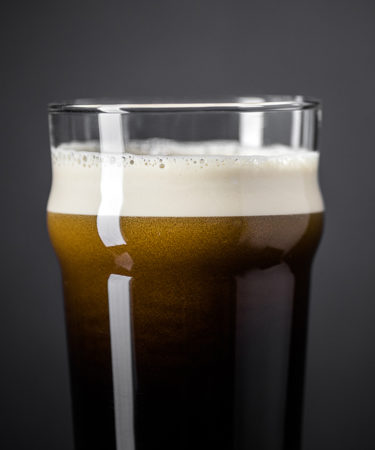Apparently, we aren’t the only ones captivated by the cascading bubbles in a pint of Guinness. A new study published in the American Journal of Physics takes a closer look at the phenomenon of “sinking bubbles,” and why, in certain beers, gas appears to sink instead of float.
The study, titled “Sinking bubbles in stout beers,” by William Lee, a professor of industrial mathematics at the University of Huddersfield in West Yorkshire, England, explains the “falling-bubbles phenomenon” as an optical illusion of sorts.
Basically, the study posits, bubbles in beer are supposed to rise because the gas carbon dioxide is lighter than liquid. Yet, anyone who’s watched the proper pour of a Guinness stout has seen the bubbles momentarily descend in the glass in a beautiful dance, swirling downward before they rise again. This isn’t because Guinness or other stouts defy physics—it’s because stouts like Guinness, called nitro stouts, contain a mix of carbon dioxide and nitrogen in their bubbles.
Nitrogen creates bubbles that are typically smaller, less buoyant, and dissolve more slowly than CO2 on its own. The mixture of the two gases creates more pressure in beer (ever pop a can of Guinness with a widget?), and as the liquid circulates downward in the glass, it gives the appearance that the bubbles are falling to the bottom, although they are in fact rising to the top.
“A surprising phenomenon witnessed by many is the sinking bubbles seen in a settling pint of stout beer,” the study’s abstract reads. “Bubbles are less dense than the surrounding fluid so how does this happen? Previous work has shown that the explanation lies in a circulation of fluid promoted by the tilted sides of the glass. However, this work has relied heavily on computational fluid dynamics (CFD) simulations. Here, we show that the phenomenon of sinking bubbles can be predicted using a simple analytic model. To make the model analytically tractable, we work in the limit of small bubbles and consider a simplified geometry. The model confirms both the existence of sinking bubbles and the previously proposed mechanism.”
Of course, this isn’t the case in all stouts, but rather in stouts that have a blend of carbon dioxide and nitrogen oxide making up their bubbles. This also isn’t limited to stouts—one could theoretically observe the “sinking” bubbles in any beer given the “nitro” gas blend.
We’re glad science is paying attention to beer. But to be honest, the participants in this study could really benefit from more time in a bar or brewery around stouts (or reading our stout style guide!) to truly understand this beer style and how it behaves.
